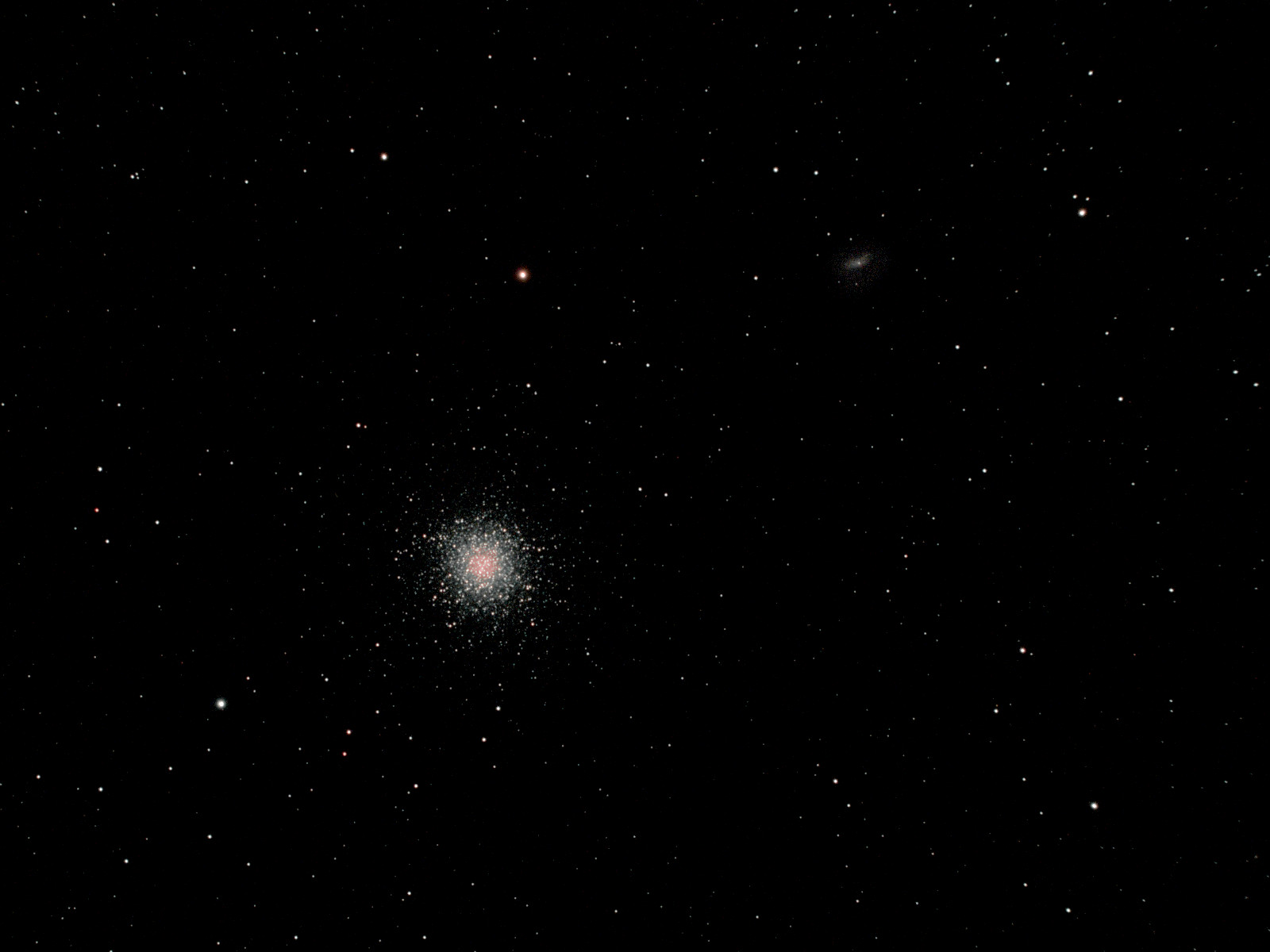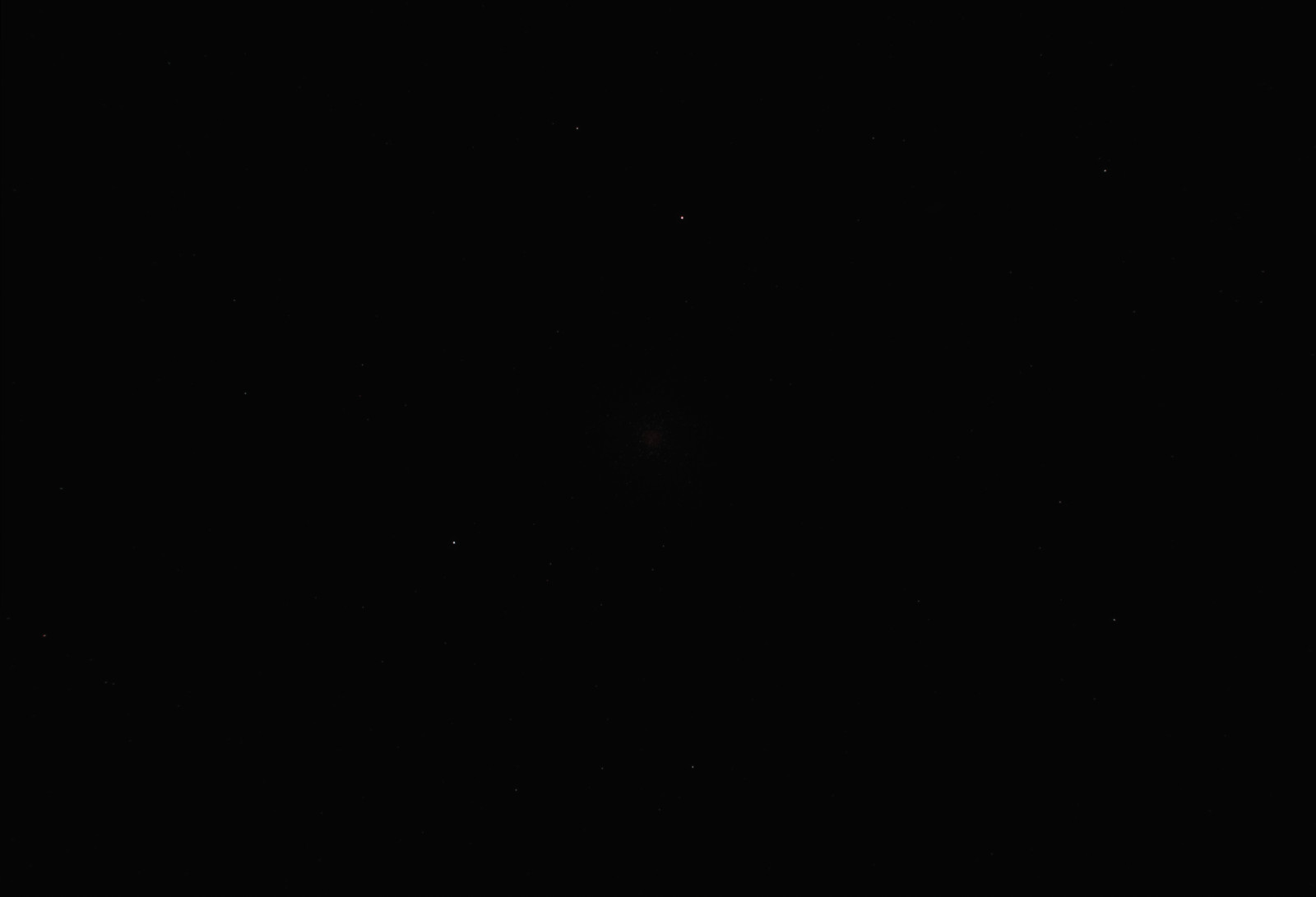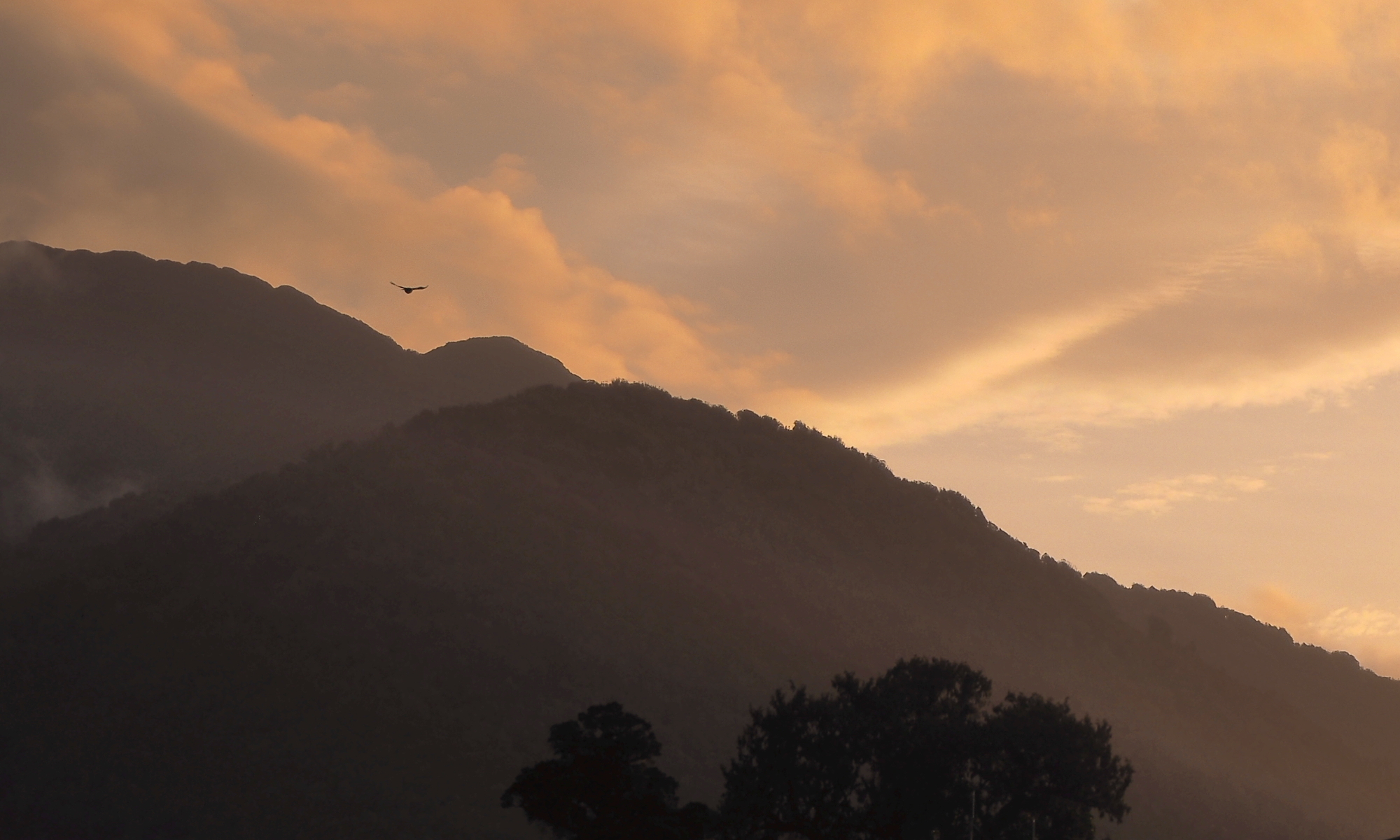
There’s a delicate hint of pink in the middle of the cluster — it is probably necessary to expand the picture to the max to see it. The pink is undoubtedly an artifact. (However, Wikipedia states that the brightest star in the cluster is a red giant… Could it be the color comes from that star??? Nah.)
The tiny galaxy to the Northeast (by accident, the orientation is roughly correct), NGC6207, is quite pretty when seen by the Hubble.
I process images using PixInsight, plus GIMP for the final touch-up. The most important single step in the process is called “stretching” — even with long exposures, an unprocessed image is dim to the point of being almost black. Something like:

If you maximize the image and look very closely, you will see a few stars (I count 15) and, in the middle, a faint ghost of M13. (I cheated — this image has actually been stretched slightly — otherwise, there wouldn’t even be a ghost!)
Though big telescopes are fabulously expensive and finicky to set up, the computing power necessary for image processing is readily available to the common nerd like me. And a telescope is not required — for example, the enormous trove of Raw Hubble Data is available online, for free.

